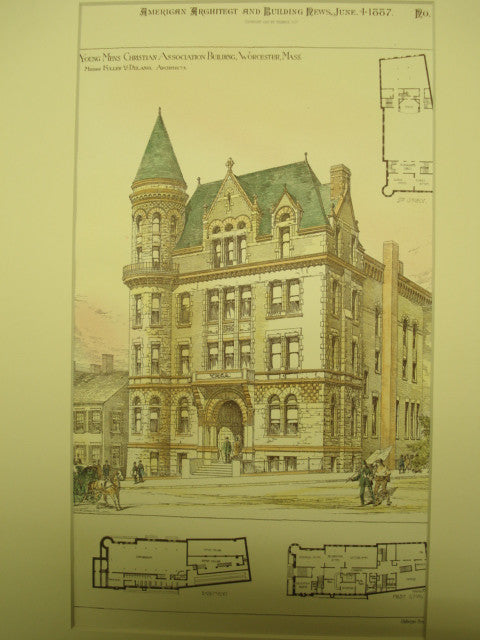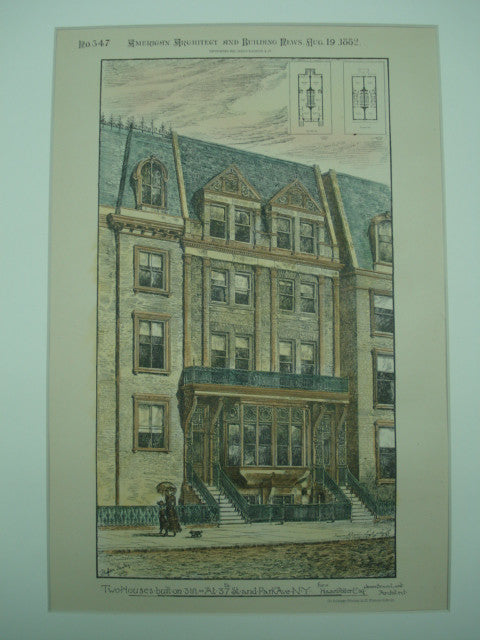News
Fine Dining and Athletics in 1887 August 28 2015
This is the twelfth installment in our series of posts comparing significant events from a year in United States history with a few of our unique architectural plans from the same period. 1887, the topic of this installment, subsequently marks the twelfth year of the American Architect and Building News' existence.
Click on the pictures to find the plans below in our store!
In New York City during the mid-nineteenth century, the Delmonico name was synonymous with fine dining throughout the nation. The family owned a number of restaurants throughout the city and was best known for pioneering the forever imitable Delmonico steak. Below is an 1887 plan for a new Delmonico's Restaurant at 341 Broadway in New York City, designed by prominent architect James Brown Lord. Though it is unclear whether this location came into existence, seeing Lord attached to the Delmonico name provides an interesting look at the influence the Delmonico family and their food had over the city.
The Young Men's Christian Association was founded by George Williams in mid-nineteenth century London. Williams was concerned about the lack of healthy activities for young men living in cities in the period soon after the industrial revolution and sought to provide new access for them. By the 1880s, the YMCA had spread throughout the Western world, providing opportunities for sportsmanship and athletic contests, as well as promoting evangelical Christian services. This 1887 plan for the Young Mens Christian Association Building in Worcester, Massachusetts designed by Fuller & Delano exemplifies the popularity and reach of the association in such a short amount of time. And this was just the beginning of the YMCA's storied history.
Electricity Begins and Poetry Ends in 1882 August 17 2015
This is the seventh installment in our series of posts comparing significant events from a year in United States history with a few of our unique architectural plans from the same period. 1882, the topic of this installment, subsequently marks the seventh year of the American Architect and Building News' existence.
Click on the pictures to find the plans below in our store!
Thomas Edison continued to shape the nation's history in 1882. To add to his list of ever-growing achievements, he established the world's first commercial electric power plant, giving electricity to an entire square mile of lower Manhattan. These two houses, at 37th Street and Park Avenue for Howard Potter, might have not been in that original lighted area, but were sure to soon feel the full effects of Edison's genius. They were designed by the master of the Beaux-Arts style, James Brown Lord.
On March 24, 1882, Henry Wadsworth Longfellow succumbed to peritonitis in his Cambridge, Massachusetts home in the company of his close family. The celebrated poet and Harvard professor was best known for his works The Song of Hiawatha and Evangeline, though he was also the first American to produce a translation of The Divine Comedy by Dante Alighieri. The First Baptist Church of Cambridge, Massachusetts (whose interior is shown below) would have been quite near Longfellow's home, though Longfellow did not attend himself. It was designed by Hartwell & Richardson.




